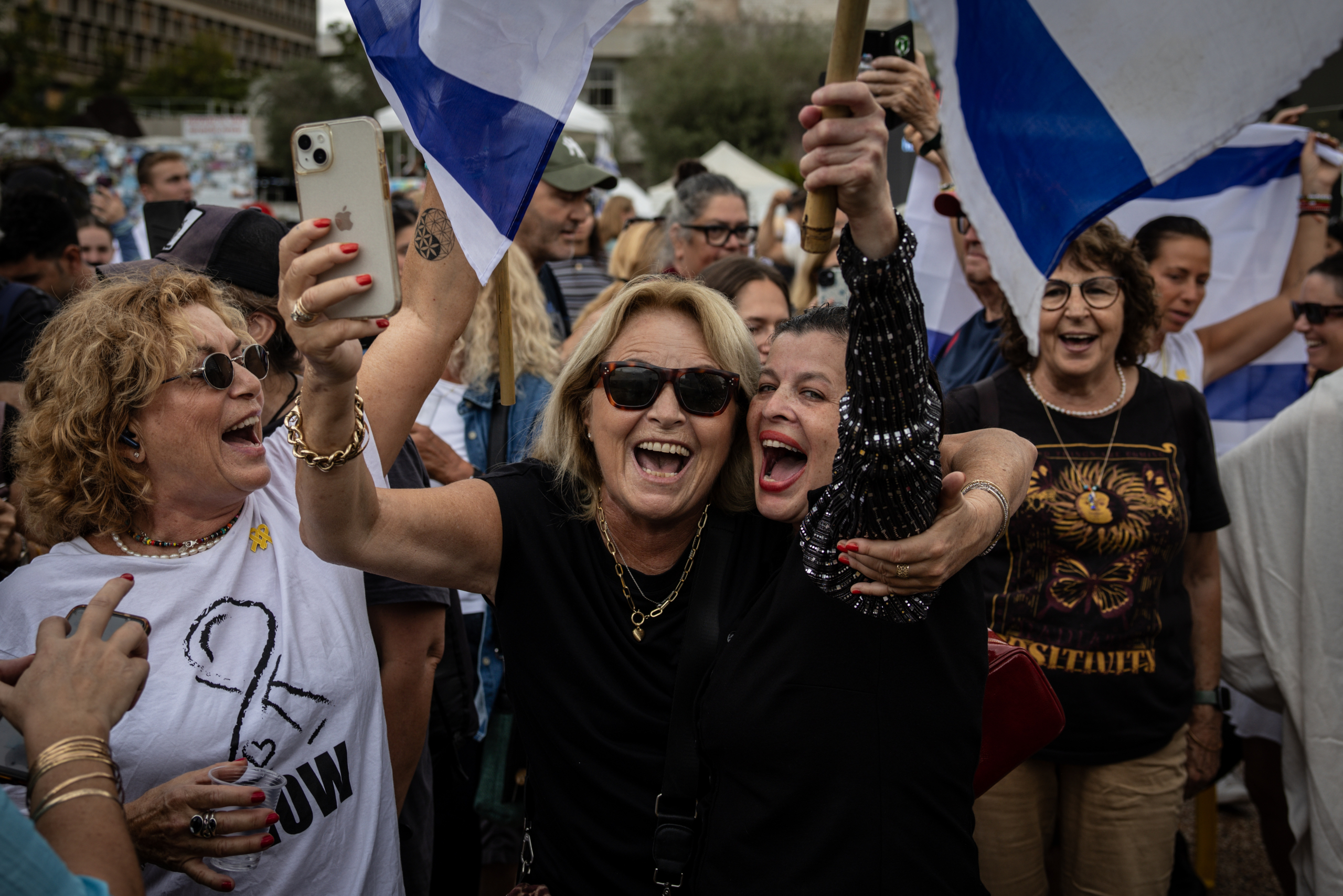By MELANIE LIDMAN, WAFAA SHURAFA Associated Press
TEL AVIV, Israel (AP) — A ceasefire between Israel and Hamas came into effect in Gaza on Friday, the Israeli military said, hours after Israel’s Cabinet approved a deal to pause the fighting and exchange the remaining hostages for Palestinian prisoners.
Tens of thousands of people who had gathered in Wadi Gaza in central Gaza in the morning started walking north after the military’s announcement at noon local time. Beforehand, Palestinians reported heavy shelling in parts of Gaza throughout Friday morning, but no significant bombardment was reported after.
The ceasefire marks a key step toward ending a ruinous two-year war that has killed tens of thousands of Palestinians, reduced much of Gaza to rubble, destabilized the Middle East, and left dozens of hostages, living and dead, in the territory. Still, the broader plan advanced by U.S. President Donald Trump includes many unanswered questions, such as whether and how Hamas will disarm and who will govern Gaza.
A brief statement from Israeli Prime Minister Benjamin Netanyahu’s office early Friday said the Cabinet approved the “outline” of a deal to release the hostages, without mentioning other aspects of the plan that are more controversial.
Israeli troops have begun to withdraw to agreed-upon deployment lines, the military said. An Israeli security official, speaking on condition of anonymity due to the sensitivity of the withdrawal, said the military would control around 50% of Gaza in their new positions.
Shelling continued early Friday
In central Gaza’s Nuseirat refugee camp, Mahmoud Sharkawy, one of the many people sheltering there after being displaced from Gaza City, said artillery shelling intensified in the early hours of Friday before the military’s announcement.
“The shelling has significantly increased today,” said Sharkawy, adding that low flying military aircraft had been flying over central Gaza.
Residents of Gaza City in the north also reported shelling in the early hours.
“It is confusing, we have been hearing shelling all night despite the ceasefire news,” said Heba Garoun, who fled her home in eastern Gaza City to another neighborhood after her house was destroyed.
Details of the deal
A senior Hamas official and lead negotiator made a speech Thursday laying out what he said were the core elements of the ceasefire deal: Israel releasing around 2,000 Palestinian prisoners, opening the border crossing with Egypt, allowing aid to flow and Israeli forces withdrawing.
Khalil al-Hayya said all women and children held in Israeli jails will also be freed. He did not offer details on the extent of the Israeli withdrawal from Gaza.
A list published Friday by Israel of Palestinian prisoners to be released as part of a the deal does not include high-profile prisoner Marwan Barghouti, the most popular Palestinian leader and a potentially unifying figure. Israel views and some others others as terrorist masterminds who murdered Israeli civilians and has refused to release them in past exchanges.
Al-Hayya said the Trump administration and mediators had given assurances that the war is over, and that Hamas and other Palestinian factions will now focus on achieving self-determination and establishing a Palestinian state.
“We declare today that we have reached an agreement to end the war and the aggression against our people,” Al-Hayya said in a televised speech Thursday evening.
To help support and monitor the ceasefire deal, U.S. officials said they would send about 200 troops to Israel as part of a broader, international team. The officials spoke on condition of anonymity to discuss details not authorized for release.
___
Shurafa reported from Deir al-Balah, Gaza Strip. Sam Mednick in Tel Aviv also contributed
